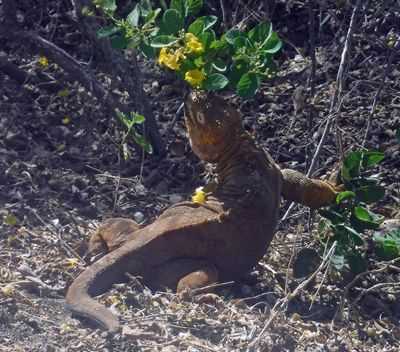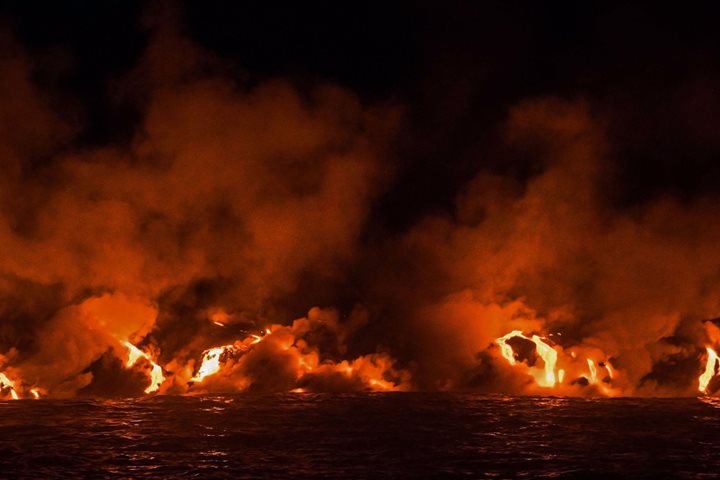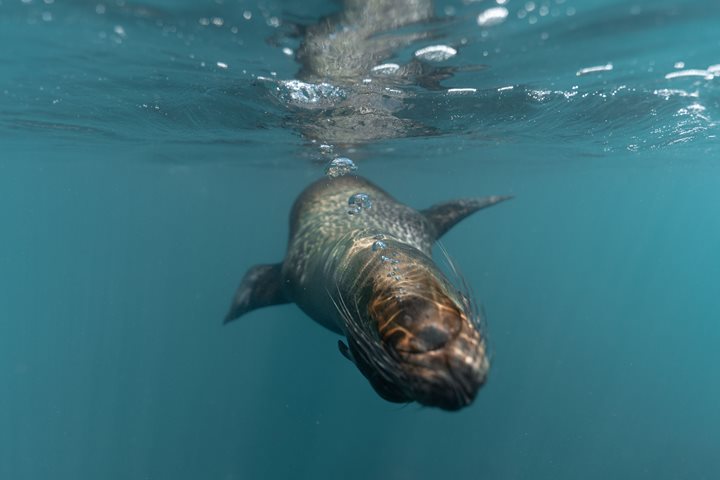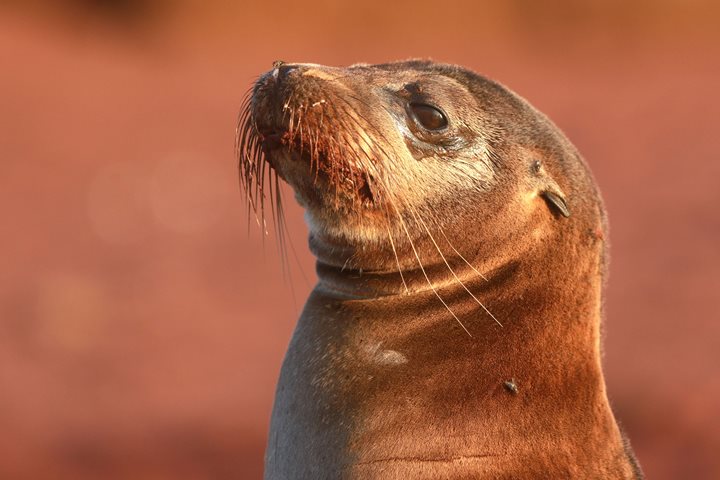This morning we woke up at Urbina Bay, an uplifted coast located in the west coast of Isabela Island, the largest of the Archipelago. This region is the most productive and is the reason why we can observe the largest marine iguanas of the Galapagos. Here we can also find the most important colonies of the endemic penguins, and the exotic flightless cormorants.
In Urbina Bay, one group of guests went for a two-mile exercise hike, while the majority went for a natural history walk around the forest. One of the most remarkable sights were juveniles of giant tortoises and the Galapagos land iguanas, two of the well suited reptiles to survive the dry low lands of the coasts of Galapagos. Along this walk we also found some land birds such as the famous Darwin finches, Galapagos mockingbirds and colorful yellow warblers. We ended up on a green sea turtle nesting beach where we could enjoy a quick swim before heading back to the National Geographic Islander for a session with our photography instructor on board.
In the afternoon we navigated to Tagus Cove, where one of the largest tuff cones of the world is located. This tuff cone is a satellite vent of Darwin volcano, one of the six active volcanoes of Isabela Island. Once in the site we prepared for a kayaking session around the cove. During the kayaking we sighted the amazing flightless cormorants performing their particular diving behavior and many sea turtles showing up their heads every once in a while for taking a breath. During a zodiac ride along the shore we could observe the sally light foot crab feeding next to brown pelicans and flightless cormorants resting on the almost vertical walls of the cove. The snorkeling group had a blast observing Galapagos penguins swimming energetically close to the shore and marine iguanas feeding next to green sea turtles. The day finished with a fast walk up to the hill of Tagus Cove, where we could have a fantastic landscape view of the Darwin lagoon inside the tuff cone and an outstanding view of lava flows of the last volcanic activity of Darwin Volcano.






